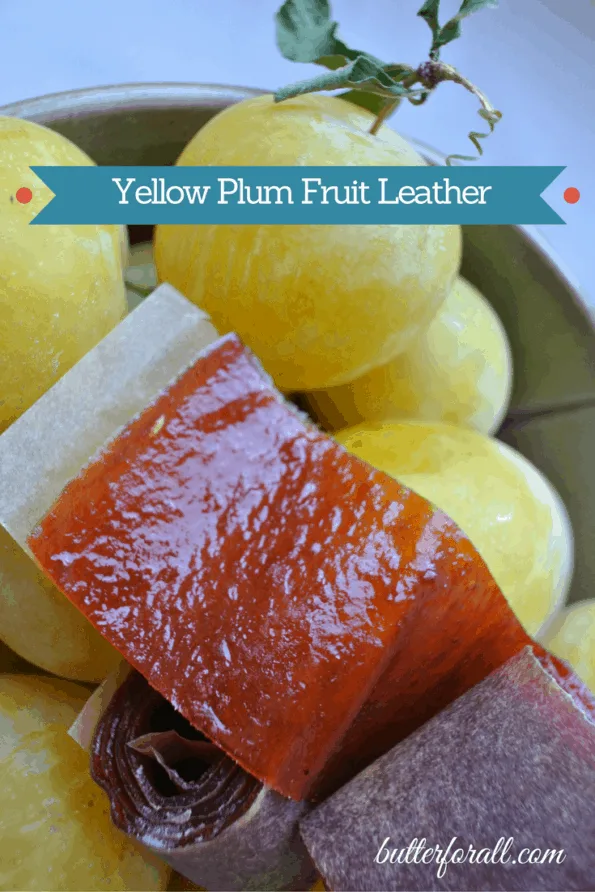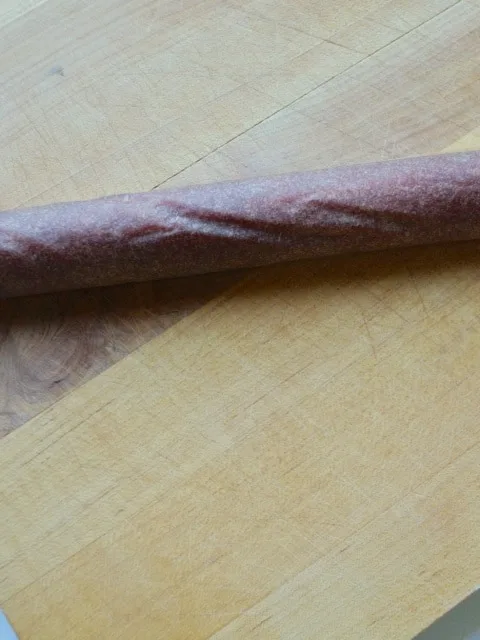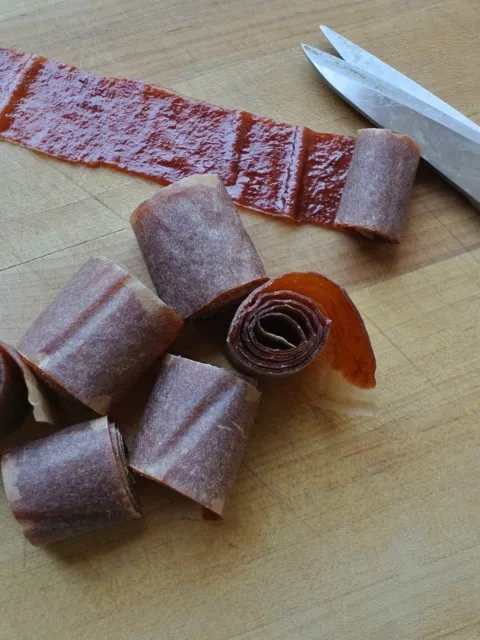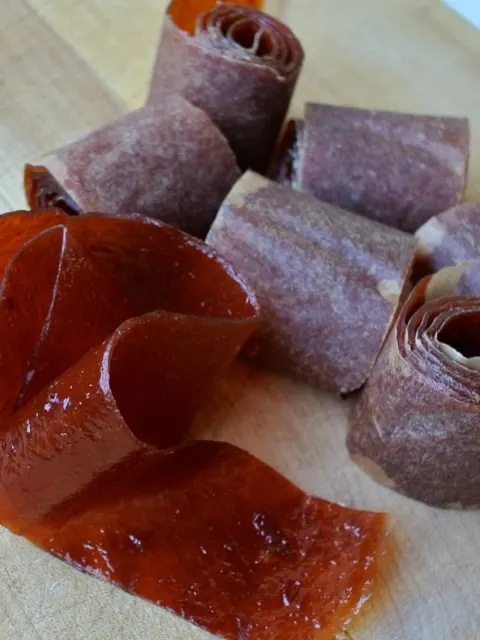This delicious plum fruit leather is really easy to make at home.
All you need is a bunch of fresh plums, a pot to cook it down in, parchment paper, and a dehydrator for drying this perfectly healthy fruit snack. I can’t even really call this a recipe. It’s more of a guide for making delicious, sweet, tart, plum fruit leather.
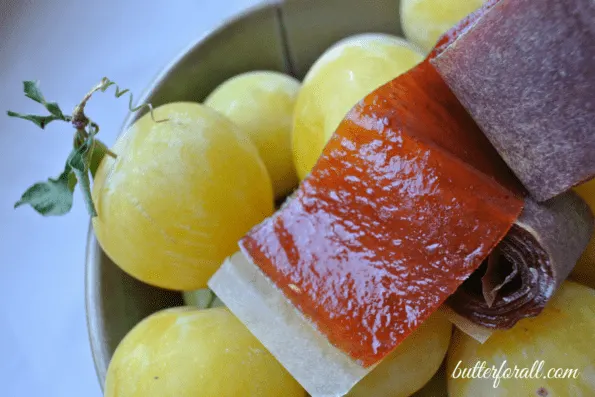
Using Fresh Plums
One thing I know from experience is that when you have a lot of plums you need something to do with them quickly! In this post I will explain the steps for making fruit leather with your bounty before it spoils.
I’m sure this guide can be adapted with great success to any variety of plum.
With the right equipment and technique, the sky is the limit as to what flavors you can make.
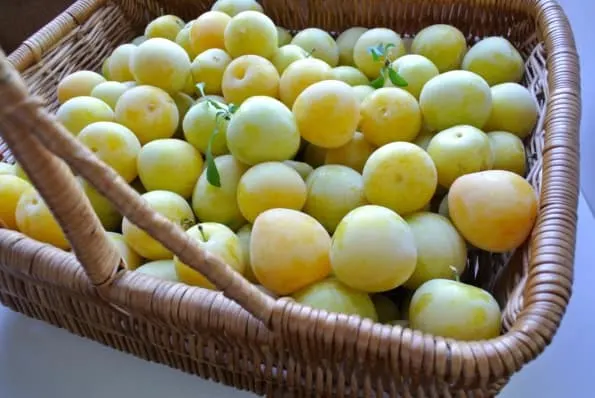
To Make Plum Fruit Leather
Cook the plums into a thick pulpy purée.
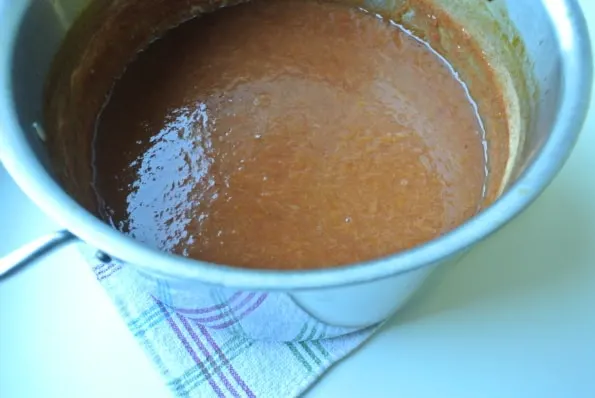
Spread the purée on parchment lined dehydrator trays.
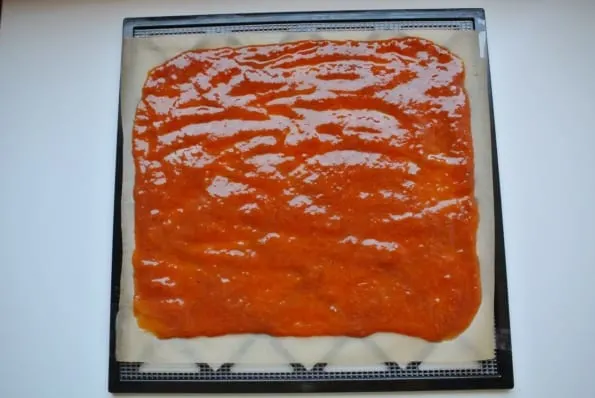
Dehydrate the purée until it is tacky and bendable.
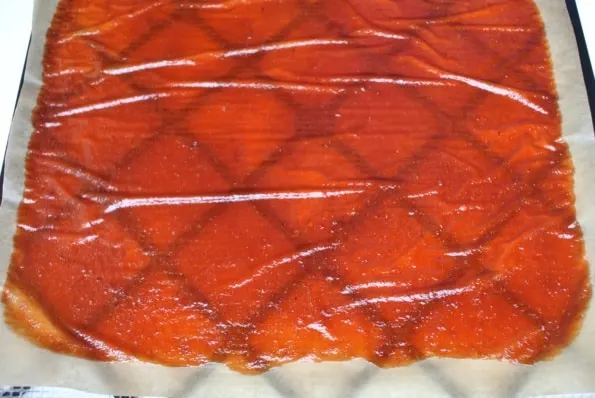
Roll the sheets of dehydrated purée and cut them into strips.
Learn how to make wonderfully delicious, easily portable, plum fruit leather with fresh-picked plums. The perfect sweet snack for any adventure. 1. In a very large stock pot combine the whole plums and enough water to cover the bottom of the pot by 1 inch. Cook the plums with the lid on over medium heat, stirring occasionally. 6. Taste your puree and decide if you would like it sweeter. If so, add honey 1 tablespoon at a time, until you've reached the desired sweetness. 10. Fill as many trays as possible with puree and load them into your dehydrator. Set the temperature to 135°F, or the manufacturer's specified temperature for fruit. 13. Let the fruit leather cool to room temperature. Start from one side of the parchment and roll the whole sheet of fruit leather into a tight, spiraled tube. Pack up a few pieces to take along on your next playdate, hike, or car adventure. Fruit leather is wonderfully portable! As an Amazon Associate and member of other affiliate programs, I earn from qualifying purchases.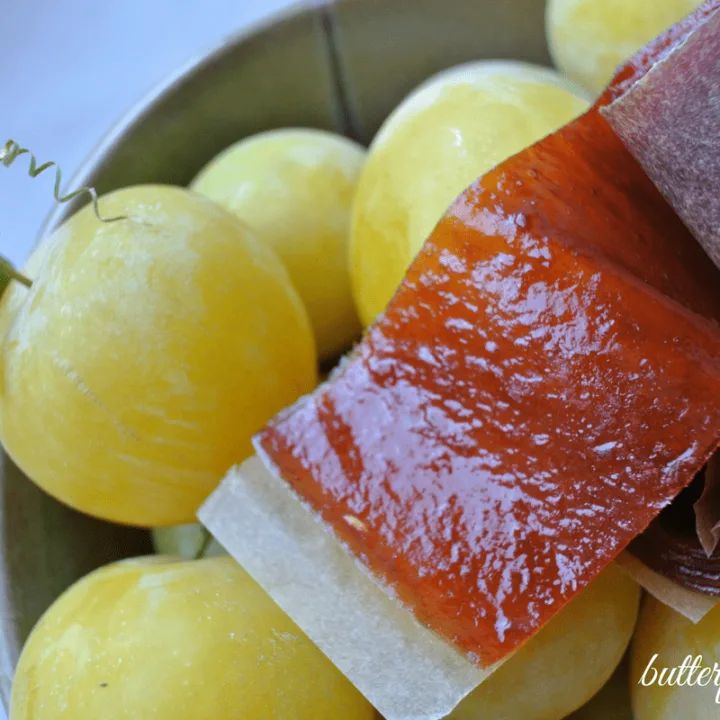
Yellow Plum Fruit Leather
Ingredients
Instructions
2. When the plums are tender and splitting, gently mash them with a large wooden spoon or potato masher. If they break down easily it is time for the next step.
3. Using a food mill over a secondary large pot, strain out the pits and skins. At this point you should have a pot of beautiful pulpy plum juice.
4. Return the juice to the stove and reduce it over medium heat. Make sure to stir it occasionally, so the plum pulp doesn't stick to the bottom and burn.
5. The reduction time will vary depending on the amount of plums you start with. It can easily take 1 to 2 hours, or more. When the plum juice is reduced to a jammy consistency it should look like this.
7. Let the puree cool and then proceed with the dehydrating process.
8. Cut pieces of parchment paper to fit your dehydrator trays. I have an Excalibur food dehydrator that I love!
9. Lay the parchment on the tray and spread a thick layer of your plum puree almost to the edges. The layer should be about 1/4 inch thick.
11. Let the dehydrator run for 6 hours and then start checking your fruit leather. The time it takes will vary depending on how thick your puree was, the number of trays filled, and your dehydrator model. Mine took around 8 hours.
12. Your fruit leather is done when it is shiny and smooth to the touch, with just a bit of tackiness.
14. Cut your fruit leather with kitchen shears into 2-inch-wide rolls. Store the fruit leather in an airtight bag or Tupperware.Notes
Recommended Products






